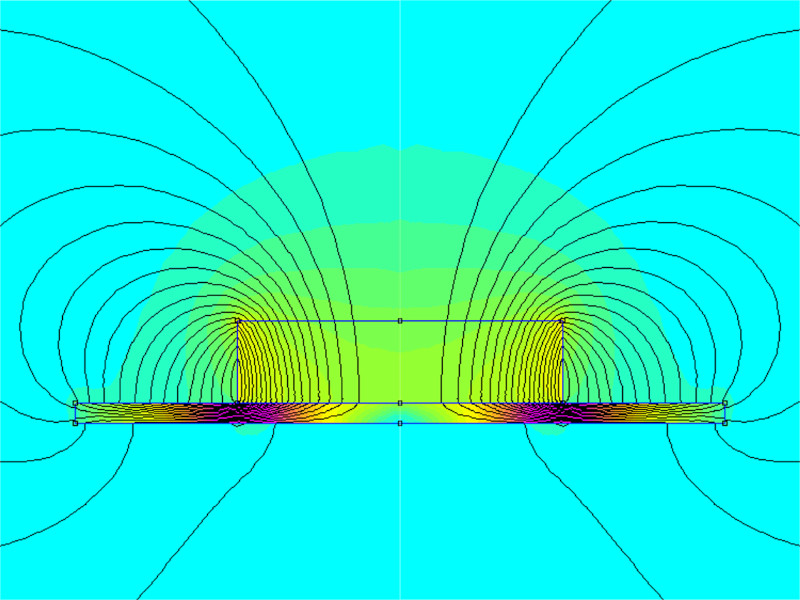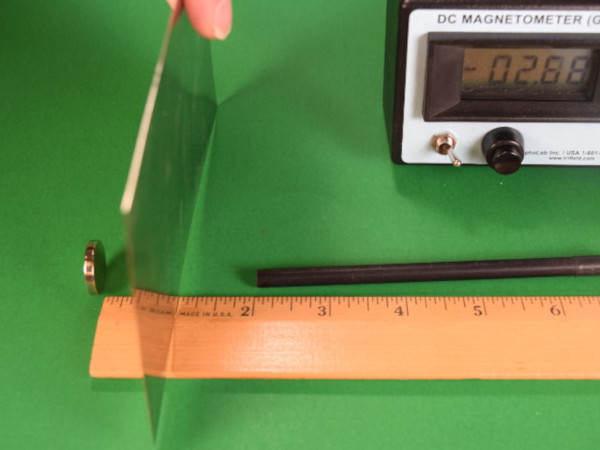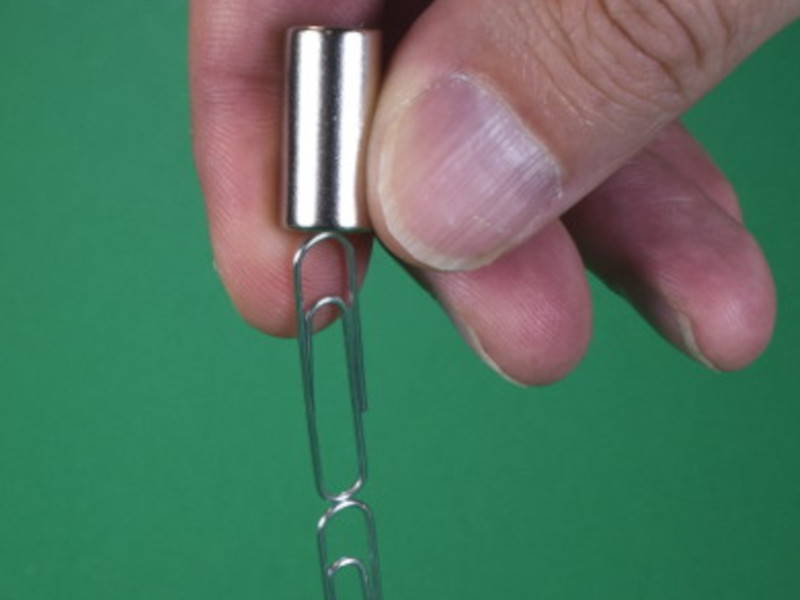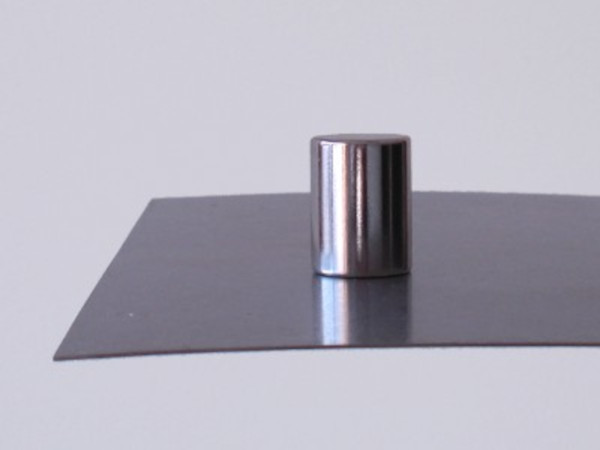Magnetic Shielding Materials
What material is best for shielding a magnet? How can I block a magnetic field?
1. What is a Magnetic Shield?
First, one important point must be clear: magnetic shielding does not block a magnetic field. No material can stop the lines of flux from traveling from a magnet's north pole to it's south pole. The field can, however, be redirected If the steel is thick enough, you can effectively reroute all of the lines of flux and prevent the magnetic field from penetrating through to the other side of the steel.
Effects of shielding on magnetic fields
In the series of pictures below, follow the lines of flux as paths from one pole of the magnet to the other. The flux lines are individual lines of the magnetic field and will always go one pole to the other. Notice that they are being rerouted and not blocked or shielded.
-
Magnetic field of a magnet in free space
The first picture is a magnet in free space with the field lines flowing through air. There is no ferrous material to shield or reroute the lines of flux so they take their natural shortest route back to the opposite pole.
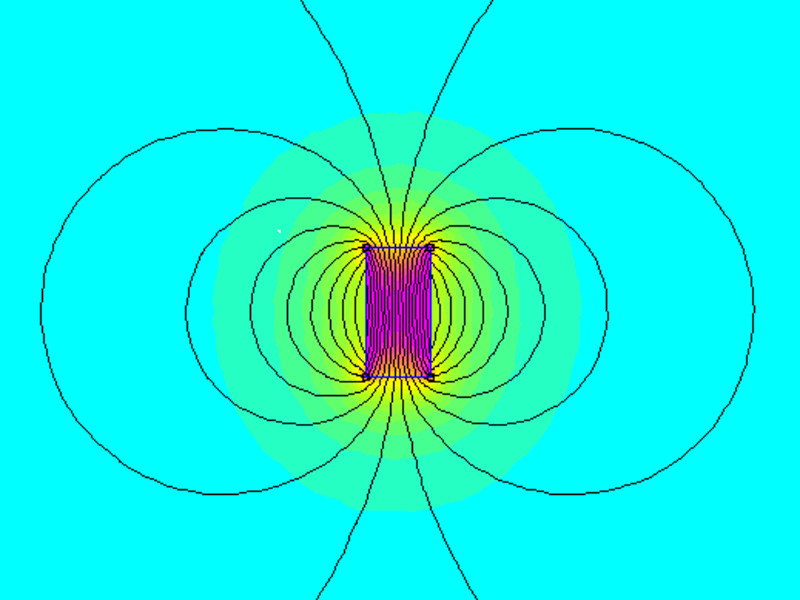
-
Magnetic field of a magnet being shielded by a steel plate
The second picture shows a wall of steel that provides an "easier" path for the lines of flux to follow. These lines flow out from the magnet's pole, into the steel for some distance, and back out into the air to get back to the magnet's other pole. Notice that the steel is thick enough to effectively absorb all of the magnetic flux.
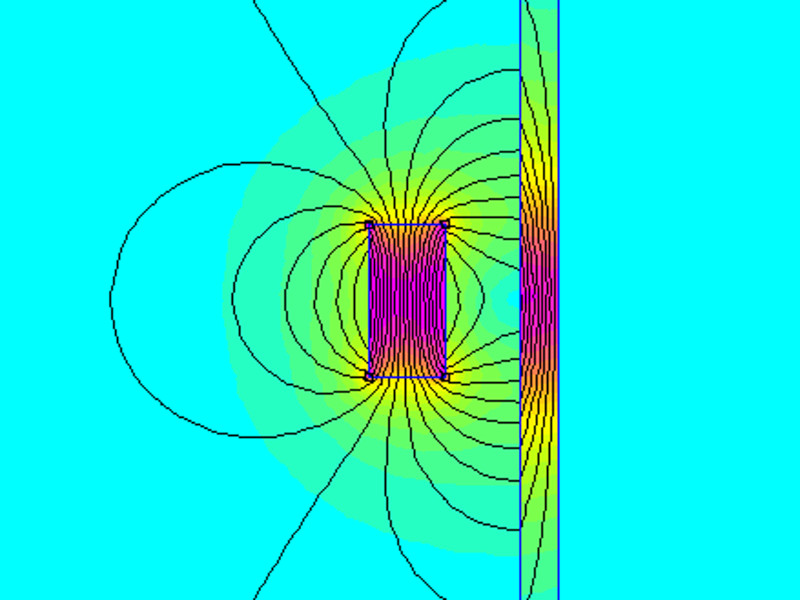
-
Magnetic field of a magnet being shielded by a steel enclosure
In the third picture, a steel enclosure reduces the ambient field strength inside by providing a path around either side of the space. You can see that the steel is large enough to absorb many of the lines of flux, but some of them are not absorbed.
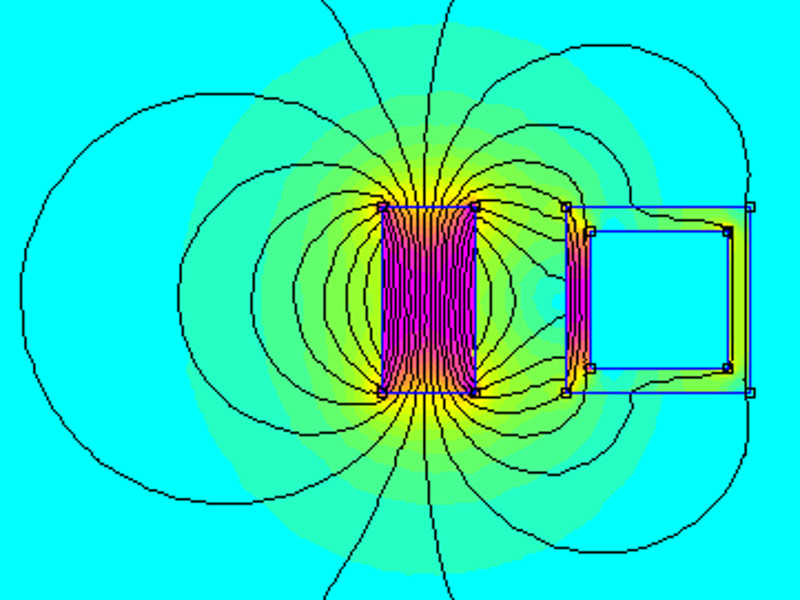
Shop Neodymium Magnets
Super strong neodymium rare earth magnets in all shapes, sizes and grades.



2. What material will work best as a magnetic shield?
The short answer is: Any ferromagnetic metal. That is, anything containing iron, nickel or cobalt. Most steels are ferromagnetic metals, and work well for a redirecting shield. Steel is commonly used because it's inexpensive and widely available. Note that some stainless steels, especially the 300 series varieties, are not ferromagnetic.
But what about other metals? Don't I need some fancier shielding material?
Yes, there are some specialized materials specifically made for magnetic shielding. The foremost of these is MuMetal also covered in our MuMetal Magnetic Shielding article which is an industry reference material defined in Milspec 14411C. Companies that provide magnetic shielding materials typically offer a version of MuMetal, and some other proprietary alloys. Most of these have a high nickel content, with either 50% or 80% nickel in the mix.
Specialized magnetic shielding materials usually have a higher relative permeability, but a lower saturation point.
Permeability is the degree of magnetization of a material that responds linearly to an applied magnetic field. For shielding, relative permeability is the permeability divided by the permeability of free space, a constant. In more practical terms, permeability is a measure of a material's ability to absorb magnetic flux. The higher the number, the better the shield.
Low carbon steels have a permeability of 1000 - 3000, while MuMetal can have values as high as 300,000 - 400,000.
The saturation point is the flux density at which the material can not contain any more magnetic flux. Steel saturates around 22,000 Gauss, while MuMetal saturates at about 8,000 Gauss.
In lower flux density fields, such high permeability materials provide greater attenuation. In higher field densities, MuMetal becomes saturated, and loses its effectiveness. In these cases, steel provides good attenuation and a much higher saturation threshold.
Finalizing choice of magnetic shield
Which material is right for you depends on your specific shielding problem. For low field strength, sensitive electronics, MuMetal can provide better shielding than steel. For many applications involving large, powerful neodymium magnets, the higher saturation point of steel serves better. In many specific cases we're asked about, a steel sheet-metal shield is often the best solution.
MuMetal as a magnetic shield
Since we've written this article, we've explored the pros and cons of MuMetal vs sheet steel for shielding. See our MuMetal article for full coverage on what MuMetal is and how it works as magnetic shielding.
3. How thick should my magnetic shield be?
This will depend on many factors. What is the size and nature of the magnetic field you're shielding? What are you shielding it from? Does it make sense to shield the magnet, or your magnetically sensitive device? Is your shield a perfect sphere, a closed cylinder, or some other shape?
The thickness of the shield matters, up to a point. When the shield is too thin, it becomes saturated, and can't "hold" any more lines of flux. You want it to be thick enough to hold as much flux as possible. However, once you reach a certain limit, adding steel thickness won't improve your shielding much.
In some cases where saturation is an issue, multiple layers of material are used.
See the above animation , where the thickness of a steel wall is varied. Once it gets below a critical thickness, the material is saturated. It can't hold any more lines of flux. At that point, the flux pops out the far side, and travels through the air.

